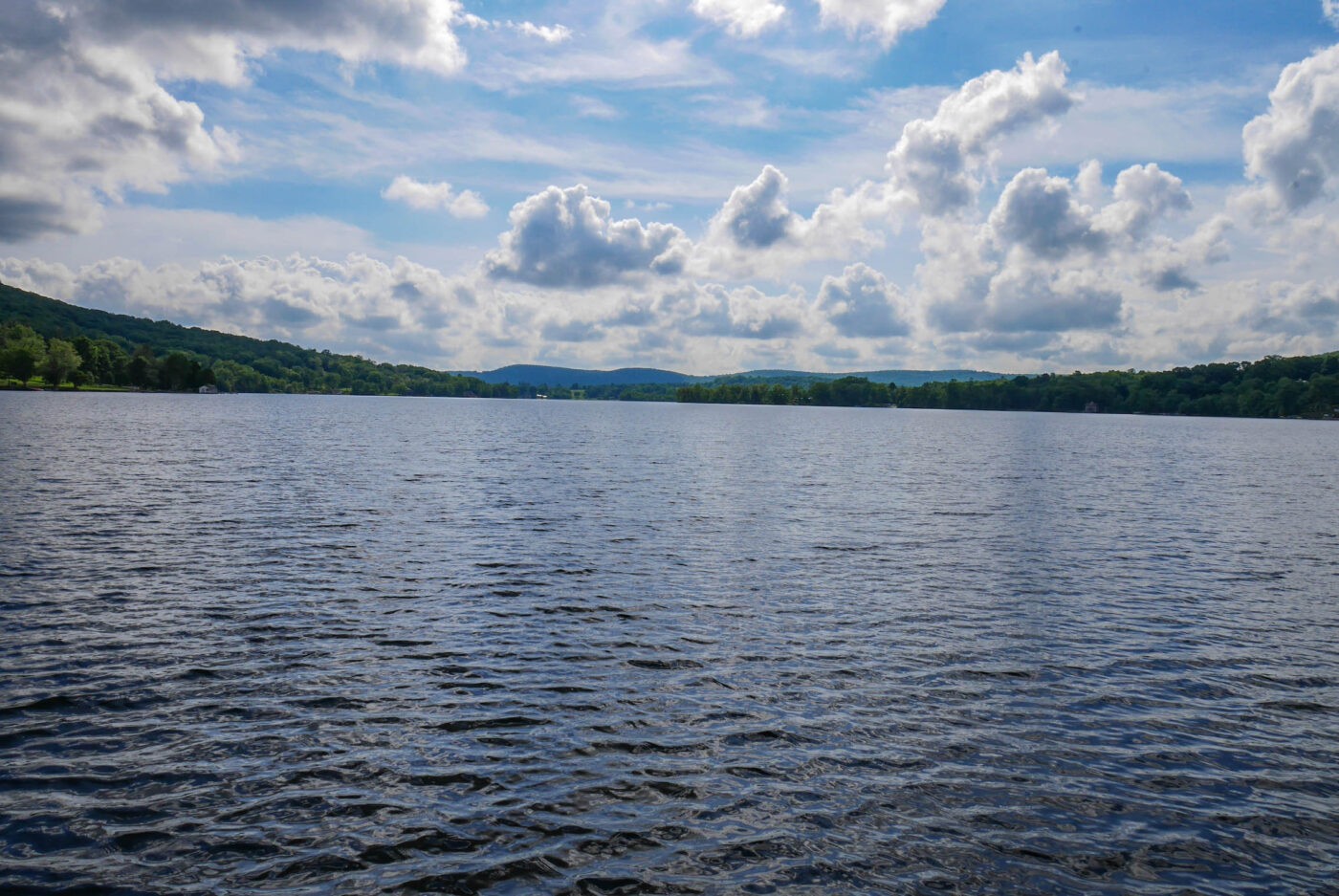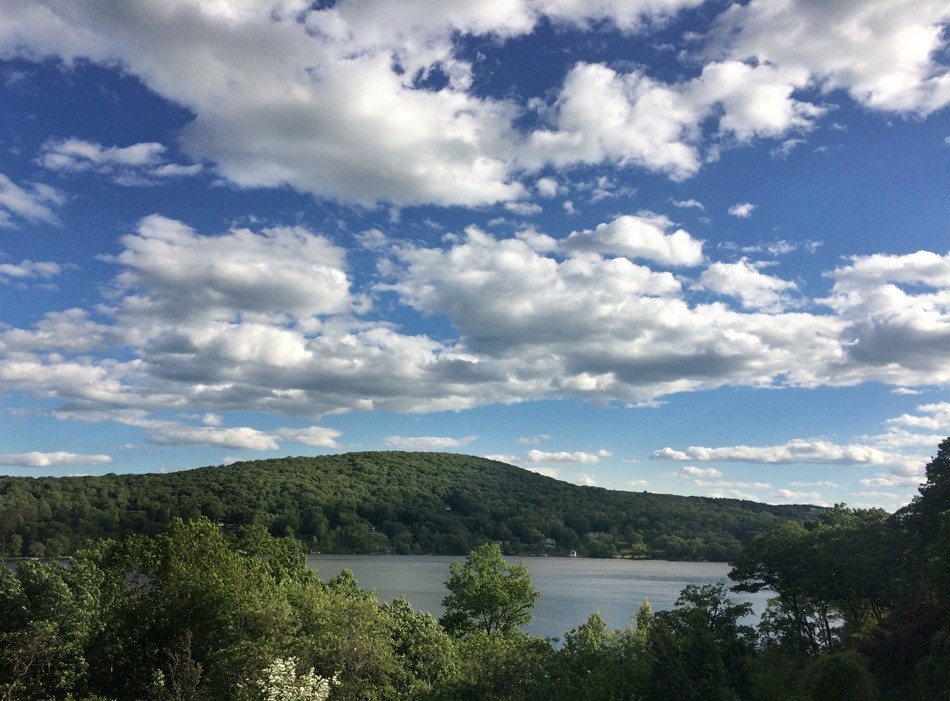9 Things You May Not Know About Lake Waramaug

Lake Waramaug has long been admired for its pristine beauty and breathtaking scenery. But did you know that the Lake was polluted for decades before being transformed into the magnificent environment we enjoy today? We have the Lake Waramaug Task Force to thank for that remarkable transformation. The Task Force is a nonprofit group of volunteers and scientists whose goal is to restore and maintain the ecology and water quality of Lake Waramaug and its watershed. We are delighted to share these interesting facts about the Lake we all love!
1. Lake Waramaug is a Connecticut Heritage Lake
It is one of the few Heritage Lakes in Connecticut, a designation earned in 2000 that supports the preservation of important environmental features such as water quality, cultural, and scenic aspects. Lake Waramaug’s unique beauty and nearly fifty years of Lake Waramaug Task Force efforts may help explain the Lake’s mention in the book “1,000 Places To See Before You Die.”
2. The lake attracts many unexpected wildlife species
Lake Waramaug is home to a variety of fish, birds, and woodland animals. In the water, one can find bass, brown trout, and pike, as well as fresh water crayfish, mussels, and snapping turtles. During the spring and summer months, songbirds abound including finch, cardinals, robins, blue jays and sparrows. Herons, eagles, loons, cormorants and other species of ducks feed in Lake Waramaug. In early spring, the Mergansers stop by on their migration north while Canadian Geese, who had been seasonal residents, have now made Lake Waramaug their permanent home due to climate change. The Waramaug habitat is also full of wild turkeys and deer. Bears are being spotted with increasing frequency as are foxes, possum and weasels, but their nocturnal habits keep them under the radar. Beavers have been seen swimming in the Lake upon occasion and rumor has it a moose was spotted taking a dip to cool off a few years ago.
3. The lake was polluted before being transformed into one of the cleanest in Connecticut
Historically, Lake Waramaug was a clean, clear lake but signs of a slow decline began in the 1950’s. From the 1960s through the mid 1980s, the lake’s eutrophication (the gradual dying of a lake) accelerated dramatically. Years of polluted runoff, sewage and fuel spills left Lake Waramaug in a vulnerable state. Recreational activities on the lake became hazardous and real estate values plummeted.
The Lake Waramaug Task Force was formed in 1975 and started raising substantial funds to get wetland regulations tightened and support cutting-edge scientific research. Robert W. Kortmann, Ph.D., a noted scientist, was retained in 1980 to assist the Task Force in its efforts to develop a program to arrest Lake Waramaug’s eutrophication. The results of the Task Force’s efforts have been spectacular. Water clarity is now regularly 10 to 14 feet, toxic cyanobacteria blooms are rare and short-lived when they do pop up, and most all non-native invasive aquatic weeds have been eradicated.
4. Innovative layer aeration systems keep the lake clean
Lake Waramaug Task Force installed in-lake fiberglass aerators at four of the deepest sections of the lake. These large aerators act as the lake’s lungs during the warm water season, improving water quality and minimizing the chances of cyanobacteria blooms. Two aerators were installed in 1989 in Washington Bay, and two were installed on Arrow Point in 2015. While the aerators appear to bubble oxygen into the lake, their actual function is to act as multi-level water mixers by taking warmer, oxygen-filled water from the surface and mixing it with colder, oxygen-poor water from bottom layers. The goal is to push the oxygen poor water layer toward the bottom of the lake and keep it there. On a typical day, the aerators move and mix over 11 million gallons of water. Next time you are on the lake, watch for those mysterious bubbles!
5. There is a Zooplankton farm on the lake
The Lake Waramaug Task Force raises and releases approximately 1,000,000 zooplankton into the Lake every week from our zooplankton farm on Arrow Point. Zooplankton are microscopic organisms that feed on cyanobacteria and help prevent toxic blooms. While they are native to Lake Waramaug, zooplankton populations were decimated when the state introduced Alewives to the Lake in the 1960s. Since Alewives feed on Zooplankton, the natural balance of the Lake that kept cyanobacteria growth in check was disrupted. Growing and releasing cyanobacteria predators is just one of the many ways the Task Force combats cyanobacteria, which is not just unsightly but an actual menace to human (and animal) health.
6. Invasive plants that threaten the lake are removed by divers and by a “suction harvest barge”
For almost two decades, the Lake Waramaug Task Force has been managing non-native invasive aquatic plant species in the lake. Invasive weeds create monoculture areas, choking out native species of plants and fish and creating boating and swimming hazards. Curly leaf pondweed is currently the dominant in-lake invasive species. Each spring, the Task Force surveys the Lake for invasive populations and target Curly leaf areas for removal. Mechanical eradication is accomplished by divers who pull the entire plant from the sediment and place it in a suction hose. The invasive weed is then transported to a weed filter on the deck of the suction harvest barge. The goal is to avoid chemical control methods to manage invasive aquatic weed populations in Lake Waramaug. The persistence of this invasive weed eradication program is proving to be extremely successful, as the Task Force has had very few invasive sightings in the past two years.
“Scenically, few bodies of water in Connecticut can rival the picturesque setting of Lake Waramaug. When vivid fall foliage is mirrored in the unrippled lake surface, the lake becomes a mecca for sightseers and photographers.”
– CT Department of Energy and Environmental Protection
7. Educational programs and oversight directly reduced runoff and pollution
Over the past few years, the Task Force has offered a variety of environmental educational programs for local students. Our focus is to teach the next generation of environmental stewards all aspects of lake health and how to protect and preserve water quality. The Task Force also works with the design and building communities to ensure that land development practices follow the principles and goals of Low Impact Development (LID). Land use change in the watershed if not done properly can have negative impacts to water quality.
8. It is the venue for some of the most popular events and recreational activities in the area
Lake Waramaug hosts two major high school crew regattas in the spring. Parents from various schools set up tents and food stations along the shore of the State Park to cheer kids on. In the summer, the Lake is also the venue for the Hopkins Vineyard Triathlon and other road races. In the Fall, Gunnery’s crew team practices on the Lake and in the winter, the Lake Waramaug Association hosts the Polar Run around the Lake. Area residents can swim, paddle board, waterski, canoe and kayak. Catch and release fishing is also popular. Traditionally, there are July 4th fireworks and flares surrounding the perimeter. Washington and Warren town beaches welcome resident beachgoers, and the State Park in Kent welcomes campers from Memorial Day through Labor Day. There are also two private clubs with beaches on the Lake. Ice fishing is popular among the intrepid.
9. Is there a way one can help to keep Lake Waramaug clean?
Yes, there is! The operations of the Task Force are funded exclusively through the generous contributions of local residents. Their annual budget of $300,000 enables their important work and is entirely dependent on private donations, as it receives no funding from the federal or state governments.
To learn more about the Task Force and to support their innovative work, visit www.lakewaramaug.org.
Quick Facts
- Lake Waramaug is the 2nd Largest Natural Lake in the State of Connecticut. The lake contains approximately 6,000,000,000 gallons of water, equal to 6,000 Olympic-sized swimming pools.
- On average, it takes a drop of water that falls on the Lake at Kent State Park Beach one year to flow over the dam in Washington.
- Sucker Brook is the main source of water to Lake Waramaug, supplying over 60% of total volume. The remainder comes from groundwater and small streams.
- There are approximately 141 catch basins on the immediate shoreline roads of the Lake.
- The deepest point of the Lake in Washington Bay is approximately 40 feet or 13 meters. The average depth of the Lake is approximately 24 feet or 8 meters.
- Every second, 190 gallons of water leave the Lake from the only outlet over the Washington Dam, flowing into the East Aspetuck River.
- Every year, Lake Waramaug Task Force stocks the Lake with 1,700 foot-long brown trout in order to control the Alewife population.
- Lake Waramaug is the only Lake in the state where every motorized boat is inspected for invasive weeds before it is allowed in the water.
- Lake Waramaug is virtually invasive aquatic weed-free. The Task Force has achieved this using only mechanical harvesting or hand-pulling, never aquatic herbicides.
- Lake Waramaug is a glacial lake, scoured out by the melting glaciers retreating from New England 12,000 years ago.
Special thanks to the Lake Waramaug Task Force who provided us with this fascinating information.
 Photo credit: Fabio Malavazzi
Photo credit: Fabio Malavazzi